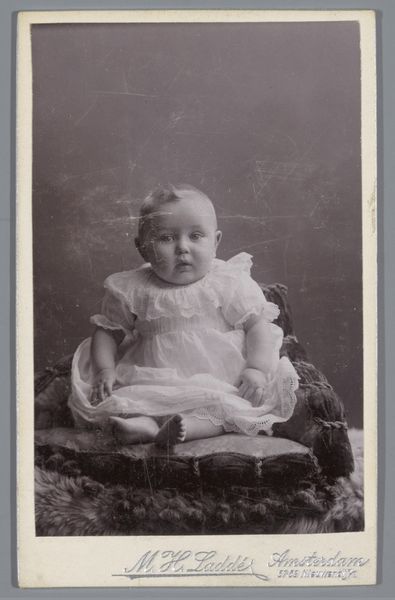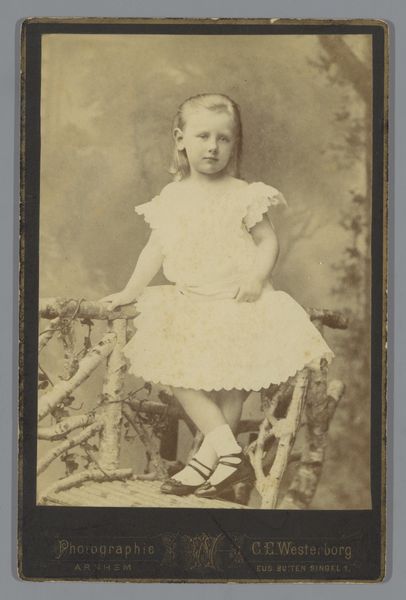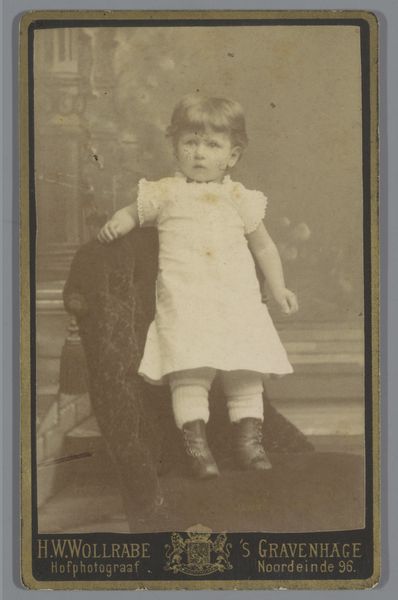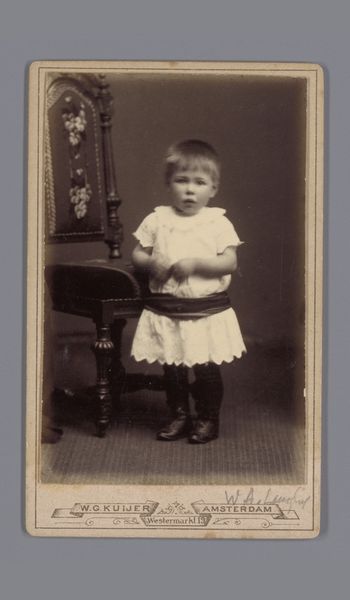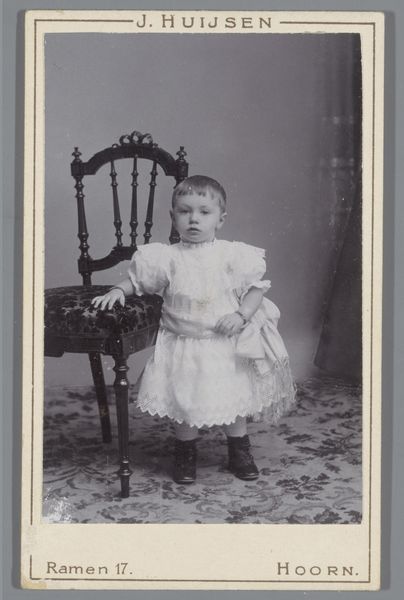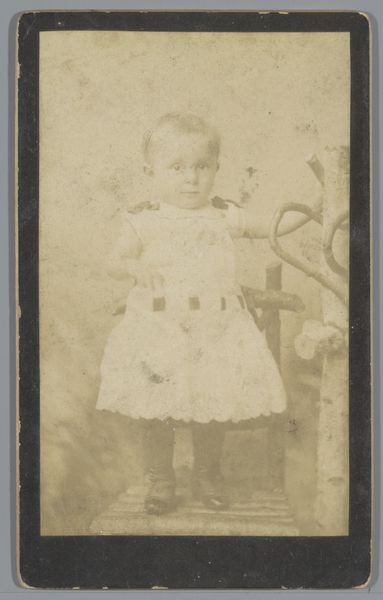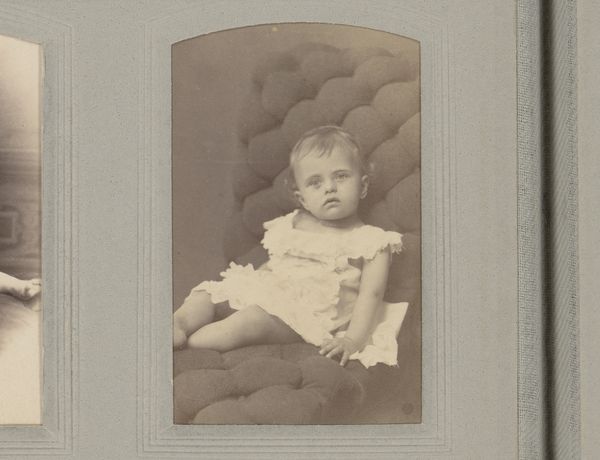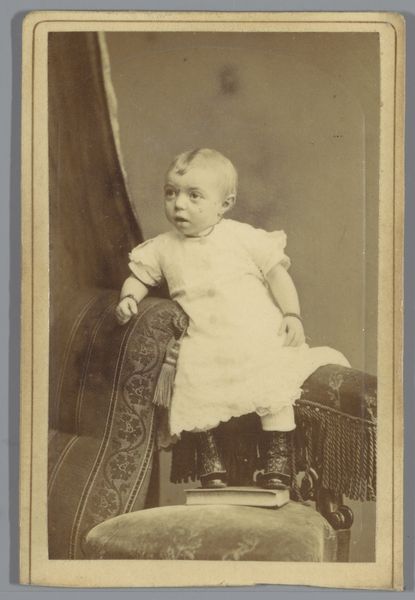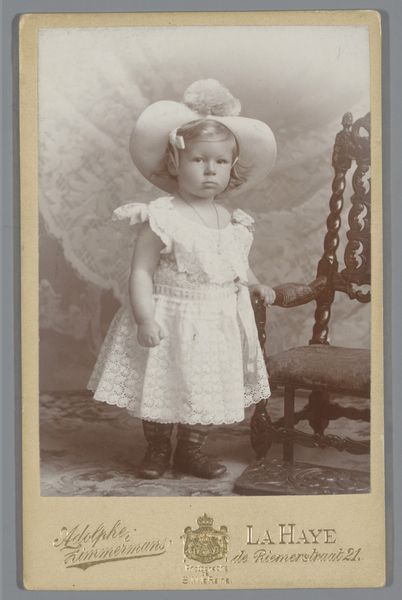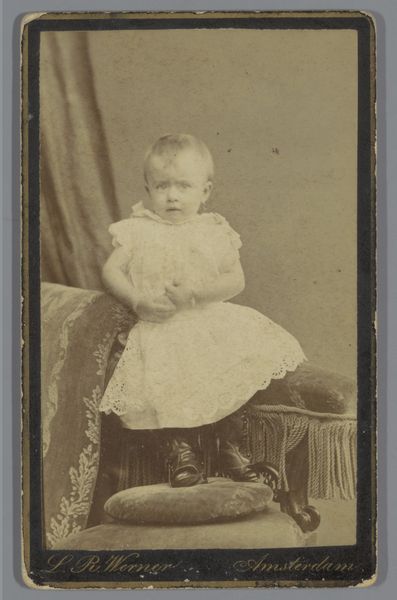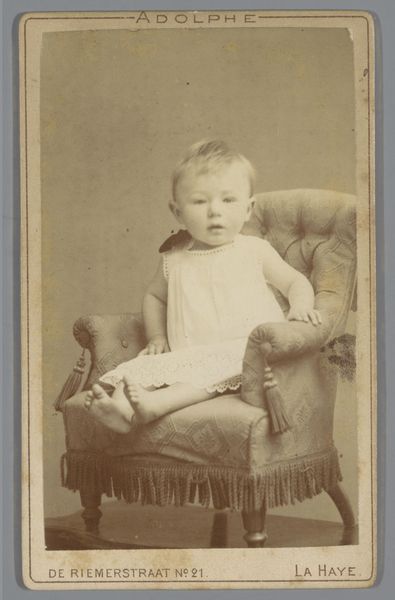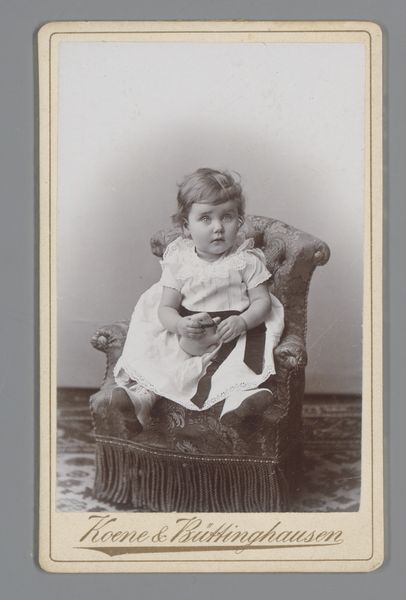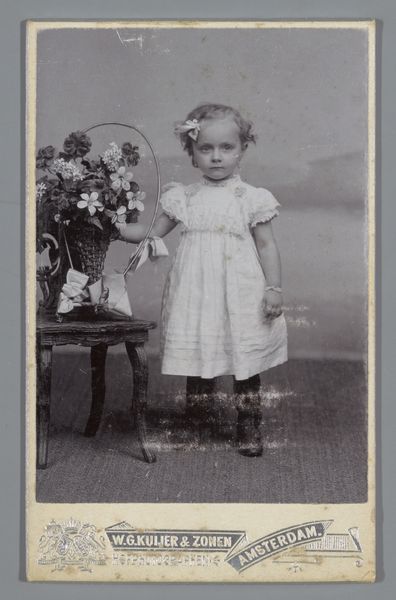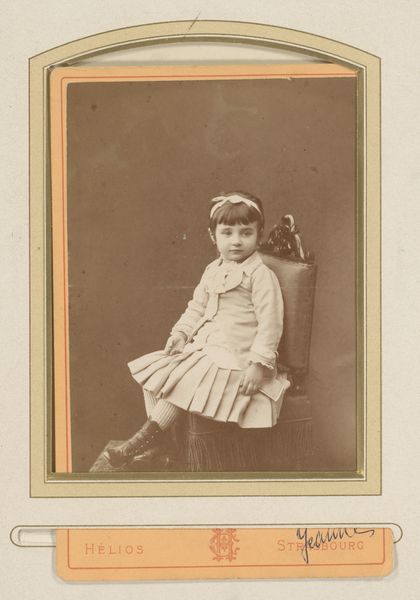
photography, gelatin-silver-print
#
portrait
#
photography
#
child
#
gelatin-silver-print
Dimensions: height 105 mm, width 63 mm
Copyright: Rijks Museum: Open Domain
Curator: What strikes me immediately is the stillness, almost a melancholic quiet, that emanates from this photographic portrait. Editor: Indeed. Here we have "Portrait of an Unknown Child on a Cushion," a gelatin silver print taken sometime between 1891 and 1906 by Edgard Colette. Note how Colette frames the child centrally. The composition is relatively simple, yet the subdued tones of the gelatin silver print add a depth and complexity to the work. Curator: It’s the eyes that hold you, isn't it? That direct, almost challenging gaze… it contrasts so vividly with the otherwise delicate pose, perched so precariously on that plump cushion. Is it confidence or merely childhood unawareness staring back at us? Editor: Consider the materiality. The gelatin silver process gives it that almost ghostly quality. Look at how light plays across the lace of the dress, defining texture yet still feeling… faded. Curator: Like a half-remembered dream. And that cushion acts as a fascinating compositional element, providing both support and, symbolically, perhaps hinting at privilege or comfort, a gilded cage maybe? Though, maybe I'm reading too much into the Victorian era’s fondness for plush furnishings. Editor: Perhaps not. The very act of portraiture, particularly of a child during this period, carries implications of status and intention. Colette's lens captures not just a likeness, but a social artifact. And the choice to keep the subject anonymous only amplifies this feeling. It invites questions about identity and representation. Curator: Right. It reminds me how every element—from pose to props—conveys meaning, intentional or otherwise. What remains fascinating is the unresolved narrative… an echo of a life glimpsed and then, instantly, lost to history. Editor: A poignant exercise in visual archeology.
Comments
No comments
Be the first to comment and join the conversation on the ultimate creative platform.
